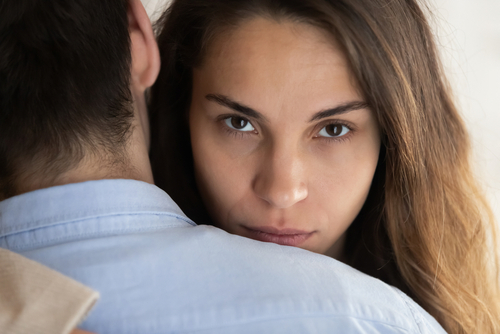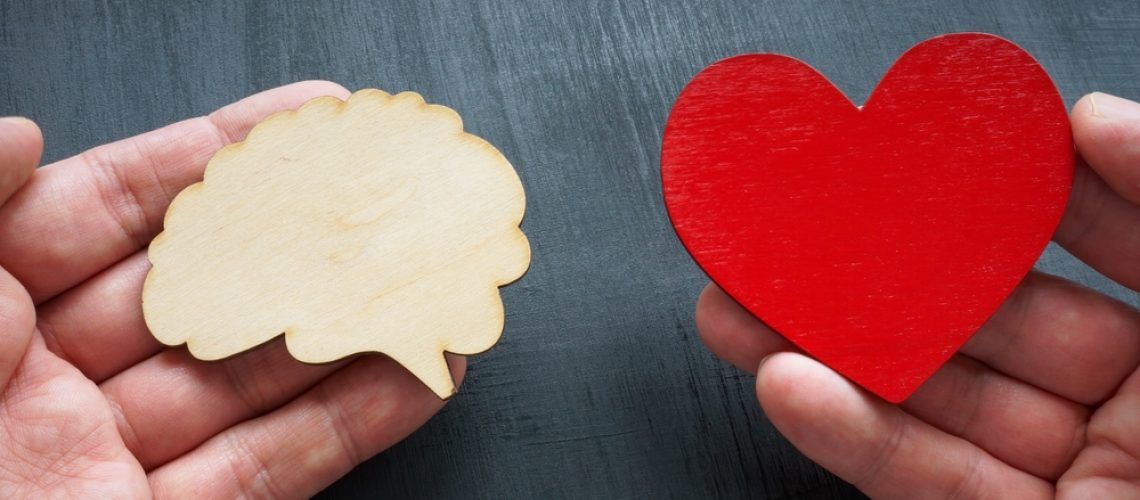The attachment styles we show in our adult relationships, especially our intimate ones, are largely shaped by our early childhood interactions with parents or caregivers. These models of behavior leave lasting effects, whether positive or negative. If a child at a young age can’t depend on their caregivers for consistent emotional support, this feeling can lead to the development of several insecure attachment styles. This, in turn, gives rise to challenges in future relationships, as the lingering insecurities regarding trust, emotional support, and connection resurface repeatedly.
Left unchecked, we will go through most of our lives re-creating unwanted relationship patterns and never truly making the connection that our behaviors are linked to the attachment experiences we had as children.
For some of us, our childhood needs were met consistently, warmly, and effectively. Most people who have experienced this kind of stable, nurturing environment may develop secure attachment in later relationships. For many people, however, childhood needs were met inconsistently, rarely, or without emotional safety. Those children tend to grow up into what w call insecure attachment styles – meaning simply that they look different than secure attachment.
In psychology reading, you may have read about insecure attachment and have come across categories like anxious, avoidant, dismissive-avoidant, fearful-avoidant, ambivalent, or disorganized attachment. At Pivot, we keep it simple and refer to secure attachment and three categories of insecure attachment: anxious attachment, avoidant attachment, and ambivalent attachment.
As one of the three insecure styles, an ambivalent attachment style is usually present in individuals who feel a profound longing for love and attention, accompanied by an equally profound (and possibly intensified) fear of being abandoned and rejected. This is often the result of inconsistent, unpredictable, or chaotic experiences in childhood.
The inconsistency is not always the result of abuse or neglect. For example, if a child grew up with divorced parents, and one parent was very engulfing and overly-attentive, while the other parent was fairly hands-off and and focused on building resilience and self-problem solving, then it may have been hard for the child to develop a core emotional attachment style. They may grow up toggling between the anxious and enmeshed connection, and the avoidant, more distanced connection. This is an anxious-avoidant attachment style, or an ambivalent attachment style as we refer to it at PIVOT. Naturally, these conflicting impulses create significant challenges in all their relationships, and romantic ones in particular.
What Is Love Ambivalence?
Love ambivalence also known as ambivalent attachment is marked by mixed or conflicting emotions toward romantic relationships and emotional intimacy in general. A person experiencing this confusing combination of positive and negative feelings, desires, and thoughts about love might have a desire for intimacy and connection with a partner while simultaneously being afraid of getting too close and showing vulnerability. There is a desire for connection coupled with an innate resistance. This is confusing for both the ambivalent attacher and their partner. The person on the receiving end of ambivalent attachment is often left wondering what they did wrong, what they need to do better, or what the issue could be with their partner
In the context of attachment theory, ambivalence is generally described as a combination of anxious and avoidant attachment styles. This means that people going through life and relationships with this type of challenge usually oscillate between conflicting emotions of avoidant attachment, defined by emotional unavailability stemming from mistrust and a tendency towards hyper-independence, and anxious attachment characterized by a deep desire for intimacy coupled with a fear of rejection and abandonment.

Is Ambivalent The Same As Anxious-Avoidant?
You may sometimes hear ambivalent attachment described as “fearful-avoidant” or “anxious-avoidant.” Fearful avoidant people are terrified of rejection, abandonment, or experiences that will prove a core fear for them – that they are unloveable. This causes a deep longing for connection and reassurance coupled with an avoidance that is rooted in their inherent mistrust that others will truly be able to consistently value and love them,
Fearful-avoidant is sometimes called anxious-avoidant because the fear creates anxiety – an ongoing worry that abandonment or rejection are imminent. This results in an anxious impulse to continually test, verify, and confirm the commitment of the relationship, while also avoidantly protecting themselves from the risk of vulnerability. The person seeks reassurance frequently and may be highly suspicious and worried about the fidelity of their partner. This makes sense if we remember that their primary caregivers were not reliable at consistently meeting their needs
For the ambivalent attacher and their partner, the results are confusing and inconsistent. The internal duality of these two tendencies – avoidant vs. anxious attachment – drives contradictory behaviors. More than any other attachment style, it is hard for ambivalent partners to create safe trustworthy commitment.
What Are The Signs Of Love Ambivalence (Ambivalent Attachment) In Relationships?
Ambivalent attachment creates a complex dynamic where individuals experience a push-pull pattern in relationships – longing for closeness and emotional connection yet struggling with fears of vulnerability. It’s important to remember that sometimes this looks like the person is ambivalent (on the fence) about being in love. The truth is often that this person experiences, desires and longs for love – but they have old wounds that get in the way of their ability to trust mutual love. This ambivalence often leads to difficulties in establishing and maintaining stable and satisfying relationships.
While each person’s experience is unique, and there are other factors that might influence relationship dynamics, the most common signs that a person with a fearful avoidant attachment (aka: ambivalent attachment) loves you:
- Alternating between periods of being deeply emotionally intimate and periods of emotional withdrawal or avoidance.
- Need for Space and independence at some times AND times of needing lots of contact. They may require time alone or engage in solitary activities as a way to manage their anxieties and maintain a sense of autonomy within the relationship, but also long for the intense contact that makes them feel like there is safety and commitment.
- Due to their anxieties and fears, ambivalent attachment styles frequently engage in self-protective strategies that can manifest as emotional walls, defensiveness, or even testing their partner’s love and commitment.
- They may ask for ongoing verification of their partner’s commitment and devotion, while being guarded about their own vulnerability.
- Being clingy and needy or exhibiting self-sabotaging behavior like pushing partners away and creating unnecessary conflicts or creating emotional distance.
- Perceiving rejection, abandonment or relationship risk where it may not actually exist. Mis-reading cues and being hyper-vigilant about self-protection.
- Constant validation seeking, needing approval, reassurance.
- Trust issues and feeling uncomfortable or threatened by partner’s independence. This can manifest as feeling worried if the partner is unavailable due to non threatening issues like work commitment, or choosing to spend time with friends and family.
- Shame and guilt about their own needy behavior that results in an isolative distancing.
How Is Love Ambivalence Connected To Avoidant And Anxious Attachment?
Love ambivalence (aka: ambivalent attachment) can be seen as a blend of anxious and avoidant tendencies, where individuals experience conflicting emotions, desires, and fears in their romantic relationships. The combination of these anxious and avoidant elements mean that ambivalent attachment presents with significant complexity.
Love ambivalence is related to both avoidant and anxious attachment styles, as it shares some common features with each:
- Avoidant attachment. Individuals with avoidant attachment tend to have an innate discomfort with intimacy and a need for independence. They might prioritize self-reliance and avoid emotional vulnerability. Ambivalent attachment, in this context, can arise from conflicting desires for both intimacy and independence. The person may yearn for connection but also be strongly self-reliant out of a fear of potential rejection.
- Anxious attachment. Those with anxious attachments seek close relationships but often experience heightened anxiety and fear regarding their partner’s devotion and commitment. Ambivalent attachment can manifest as a mixture of intense longing for connection and a desire to be fully seen and cared for, while simultaneously doubting or having difficulty trusting the security of the relationship.
Ultimately, attachment styles exist on a spectrum, and individuals might exhibit different patterns depending on the context, their personality, or the person they’re in relationship with. Additionally, attachment styles can be influenced by personal growth, professional help, and self-reflection.

Learn To Change the Patterns of Ambivalent Attachment Style With PIVOT’s Expert Guidance
If you recognize these ambivalent patterns in yourself, or perhaps you’re wondering how to live with or support someone with ambivalent attachment, you can certainly find some comfort in knowing that it’s possible to achieve a sense of security with guidance from experienced PIVOT coaches. Engaging in guided self-reflection can help individuals understand and navigate their attachment style and address any love ambivalence.
Our expertise is in helping people understand how their early life experiences shaped their responses and unwanted patterns in the here-and-now. When we look at attachment styles as a series of adaptations that kept us safe once, but now may not be so protectively necessary, change becomes possible.
Whatever may be causing difficulties with your romantic partners, we’ll delve deeper into attachment theory to help you understand who you are, why you do the things you do, and why you chose the people you chose.
It’s important to remember that attachment styles are not permanent traits and that it’s possible to approach relationships in a different manner. Participating in intimate group workshops held in Glass House retreats can help individuals learn, practice and display different attachment behaviors and form intimate and healthy relationships over time. We also offer personalized intensives for individuals, couples, or families to help really get to the heart of the dynamics. Or, perhaps individual coaching sessions are the pacing that feels right for you. We are here to help!

